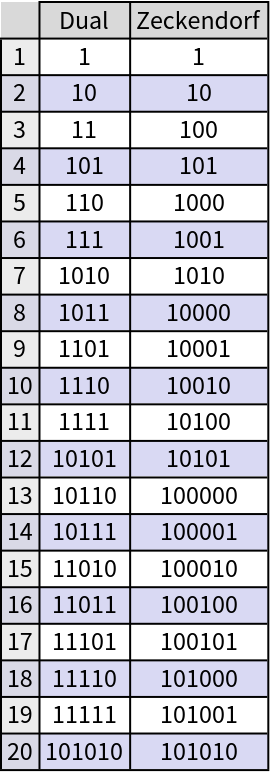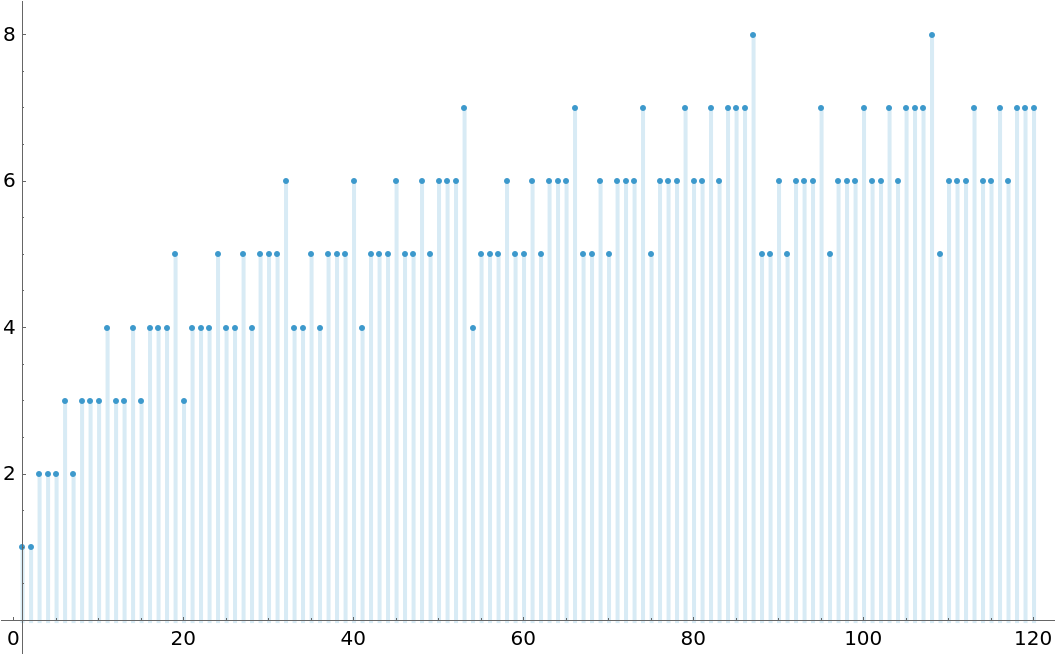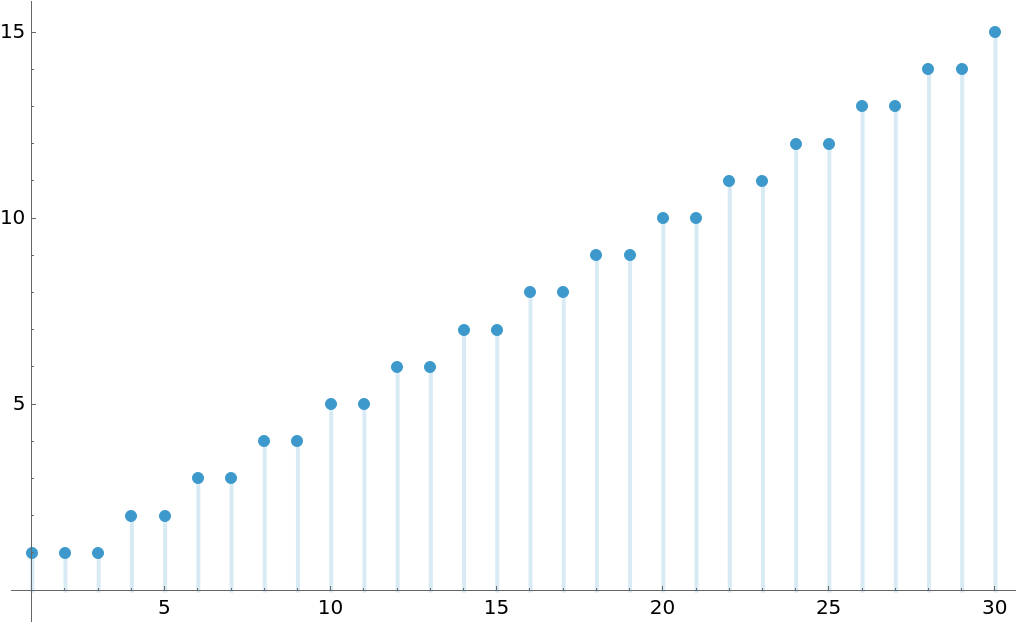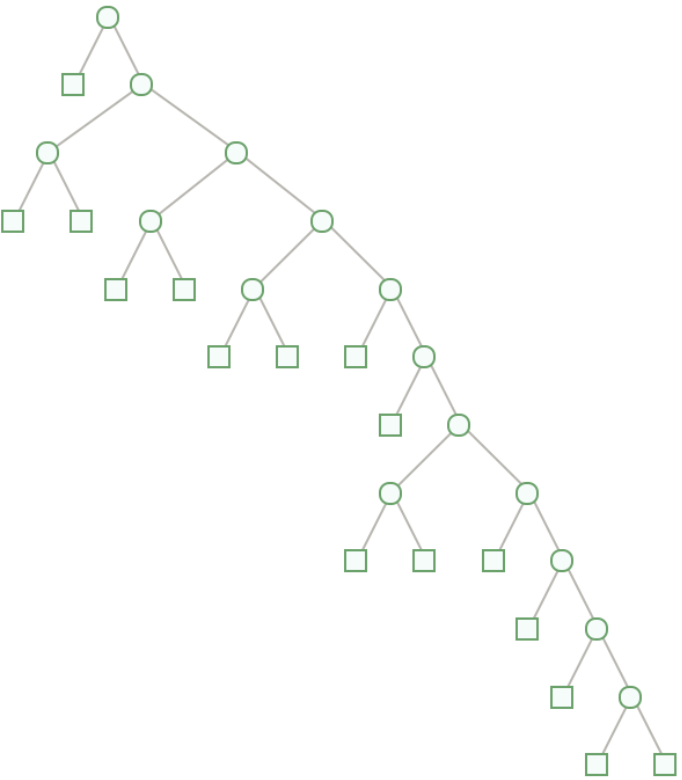Scope (5)
By definition, one can directly find dual Zeckendorf representation by eliminating binary string with "00":
Recover a number from its dual representation:
In the dual representation, the largest index of Fibonacci number has the following property:
Thus input falls precisely the gap between the sum of Fi for i = 2 to 28 and from 2 to 29=28+1:
The second largest value, 26, is found in the similar way by definition:
For any input n, its dual Zeckendorf representation is {1,1, … ,1} or zero-free if and only if n= Fk-2, where Fk is the k-th item in regular Fibonacci sequence with k>=4:
For any input n, its dual Zeckendorf representation is {1,0,1,0 … ,0|1} or alternating pattern (the ending in 0 or 1 depends on the parity of bit length) if and only if n= Fk-1, where Fk is the k-th item in regular Fibonacci sequence with k>=4:
Properties and Relations (3)
The dual Zeckendorf representation vs. Zeckendorf representation: the former does not allow consecutive zeros, meanwhile the latter does not allow consecutive ones. Check the fact with the first twenty numbers:
Fibonacci terms minus one:
The identical representations for 4, 7, 12, 20, ..., continue:
Neat Examples (2)
The number of ones in the dual Zeckendorf representation for first 120 numbers:
Compare the ones in the Zeckendorf and the dual representation for Fibonacci numbers:
Visualize the number of ones in the dual representation for Fibonacci number:
The sequence is OEIS A065033:
Because no consecutive zeros are allowed, all dual Zeckendorf representations are compact Huffman code:


![(ResourceFunction["DualZeckendorfRepresentation"][#] == ResourceFunction["ZeckendorfRepresentation"][#]) & /@ FibMinus](https://www.wolframcloud.com/obj/resourcesystem/images/968/968a1700-fc27-49e5-85b0-ce0fbf045e9b/1-0-0/43db4f3245e429fe.png)

![DiscretePlot[
Total[ResourceFunction["DualZeckendorfRepresentation"][
Fibonacci[k]]], {k, 1, 30}]](https://www.wolframcloud.com/obj/resourcesystem/images/968/968a1700-fc27-49e5-85b0-ce0fbf045e9b/1-0-0/6e345b77ec3879b2.png)

